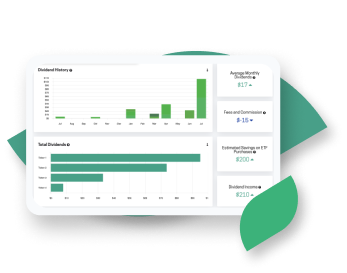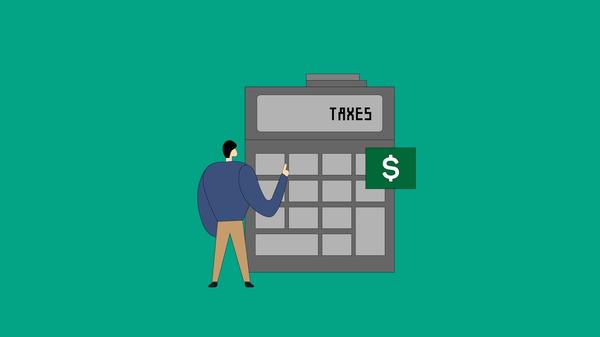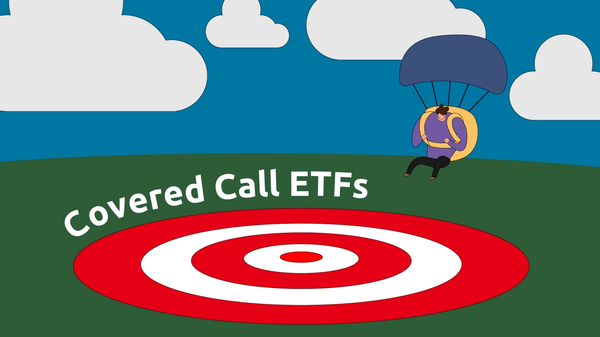For the investor deciding on vehicles to suit their investment options the choice can sometimes be overwhelming. That’s why so many have settled on exchange-traded funds (ETFs) as a sound trading strategy.
As is the case with any investment, some considerations when purchasing an ETF are more important than others.
Passiv surveyed all of our users to determine what was most important to them when considering to buy an ETF.
Here are the four most common considerations:
1. Fees
2. Benchmark
3. Actively or Passively Managed ETFs
4. Markets Tracked
Let's take a closer look at each of these considerations.
The Most Common Considerations When you Buy An ETF
Fees
There are two parts to the fee consideration. The fees passed down to you by the platform you use and the fees for the ETF itself.
Most platforms offer commission-free trading, meaning that you don’t have to pay fees to the platform providers to buy or sell ETFs. However, a commission-free purchase or sale does not mean that the ETF provider will also provide access to their product without associated costs.
Some areas in which platform services can distinguish their services from others are convenience, services, and product variety. Some well-known brokerages offer extensive educational content that helps new investors become familiar with and research ETFs.
Finally, like all funds, ETFs charge fees. In Canada, this is called a management expense ratio (MER). The MER includes not only management fees, but also administrative, operational, and marketing expenses. It is expressed in percentages deducted from your total investment annually, like 0.50 percent.
Other than the obvious immediate reason that lower fees are important, keeping them as low as possible is particularly important for helping improve long-term returns.

Lower your fees with Passiv
You can rebalance your portfolio or reinvest cash more easily with Passiv to save on costly transaction fees.
Get StartedBenchmark
When it comes to evaluating investment returns in your portfolio, it is most appropriate to compare your results relative to a benchmark index.
The appropriate benchmark for a large-cap ETF will depend on what index or sector it is meant to track and/or what investment style it undertakes. For broad-based portfolios and ETFs like the SPY, the S&P 500 is the most common benchmark index.
For medium- or small-cap stocks, equities might fall into categories like growth, value, or blend for large, mid, and small caps, as well as international stocks. On the international side, equities can also track developed markets or emerging markets. There are many sub-asset classes for bonds as well.
Another important factor is that the benchmarks used should do a better job of tracking where you are actually invested, as well as the percentage of your portfolio that is invested in these areas.
Is the ETF actively or passively managed
Passively managed ETFs can replicate the performance of a broader index— either a diversified index such as the S&P 500 or a more specific targeted sector or trend. An example of the latter is gold mining stocks: as of October 2023, there are approximately nine ETFs which focus on companies engaged in gold mining, excluding inverse, leveraged, and funds with low assets under management (AUM).
Actively managed ETFs typically do not target an index of securities, but rather have portfolio managers making decisions about which securities to include in the portfolio. These funds have benefits over passive ETFs but tend to be more expensive to investors. We explore actively managed ETFs below.
The markets the ETF tracked
When looking into the purchase of ETFs it’s useful to identify the types of investments available and the fees involved. For example Bond ETFs provide regular income to investors depending on the performance of the underlying bonds. These might include government bonds, corporate bonds, and municipal bonds. Unlike the underlying instruments, bond ETFs do not have a maturity date. They gen``erally trade at a premium or discount from the actual bond price.
Stock ETFs comprise a basket of stocks tracking a single industry or sector. For example, a stock ETF might track automotive or foreign stocks. The aim is to provide diversified exposure to a single industry, one that includes high performers and new entrants with potential for growth. Unlike stock mutual funds, stock ETFs have lower fees and do not involve actual ownership of securities.
Industry or sector ETFs focus on a specific sector or industry. An energy sector ETF or a Tech sector ETF will include companies operating in that sector. Industry ETFs allows exposure to the upside of that industry by tracking the performance of companies operating in that sector.
Commodity ETFs invest in commodities, including crude oil or gold.They help diversify a portfolio, making it easier to hedge downturns. And they can provide a cushion during a slump in the stock market. Second, holding shares in a commodity ETF is cheaper than physical possession of the commodity. This is because the former does not involve insurance and storage costs.
Currency ETFs are pooled investment vehicles that track the performance of currency pairs, consisting of domestic and foreign currencies. They can be used to speculate on the prices of currencies based on political and economic developments for a country. They are also used to diversify a portfolio or as a hedge against volatility in forex markets by importers and exporters. Some of them are also used to hedge against the threat of inflation. There’s now even an ETF option for bitcoin.
Inverse ETFs attempt to earn gains from stock declines by shorting stocks. Shorting is selling a stock, expecting a decline in value, and repurchasing it at a lower price. An inverse ETF uses derivatives to short a stock. Essentially, they are bets that the market will decline.
A leveraged ETF seeks to return some multiples (e.g., 2× or 3×) on the return of the underlying investments. For instance, if the S&P 500 rises 1%, a 2× leveraged S&P 500 ETF will return 2% (and if the index falls by 1%, the ETF would lose 2%). These products use derivatives such as options or futures contracts to leverage their returns. There are also leveraged inverse ETFs, which seek an inverse multiplied return.
Where & How to Buy ETFs
ETFs are available on most online investing platforms such as Questrade, retirement-account provider sites, and investing apps like Robinhood.
There are many sites online like moneysense.ca that monitor the daily performance of the many ETFs available.
Other Factors To Consider When Buying An ETF
There are dozens of factors to consider when buying an ETF, but some of the most common include:
1. AUM - the total of all investor dollars invested in all share classes of the fund
2. The sectors the ETFs track - is the ETF tracking, as an example, tech, energy, medical, or any other sectors?
3. Tracking error - how much the ETF deviated from the index it was tracking, which causes underperformance over time
5. The dividend payout ratio - how much dividends it pays out
Other factors considered include the distribution frequency, what the underlying assets of the ETF are, and what the returns are (if it’s a thematic or active ETF).
How Do I Research An ETF?
After funding your account with Questrade or others, you can narrow your ETF options by utilizing an ETF screening tool. Many brokers offer these tools as a way to sort through the thousands of ETF offerings. Here are some of the criteria that allow you to look into the considerations listed above:
Expenses: The lower the expense ratio, the less of your investment that is given over to administrative costs. While it may be tempting to always search for funds with the lowest expense ratios, sometimes costlier funds (such as actively managed ETFs) have strong enough performance that it more than makes up for the higher fees.
Performance: While past performance is not an indication of future returns, this is nonetheless a common metric for comparing ETFs.
Holdings: The portfolios of different funds often factor into screener tools as well, allowing customers to compare the different holdings of each possible ETF investment.
Volume: Trading volume over a particular period of time allows you to compare the popularity of different funds; the higher the trading volume, the easier it may be to trade that fund.
A Helpful ETF Buying Strategy
If you are a beginning investor in ETFs, dollar-cost averaging (or spreading out your investment costs over a period of time) is a good trading strategy. This is because it smooths out returns over a period of time and ensures a disciplined (as opposed to a haphazard or volatile) approach to investing.
It also helps the beginning investor to learn more about the nuances of ETF investing. When they become more comfortable with trading, investors can move out to more sophisticated strategies like swing trading and sector rotation.
Conclusion
There are many things to consider when purchasing an ETF. But the four most common are:
1. How much you will pay in fees
2. Results relative to a benchmark index
3. Is it Actively or Passively managed
4. What markets the ETF tracks
With these considerations, you will have a much stronger idea of what you are buying, what you are paying for, and how it will perform in your portfolio.
Happy shopping!


